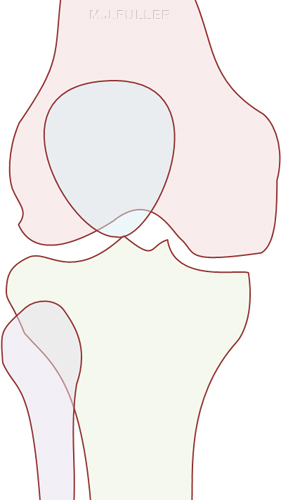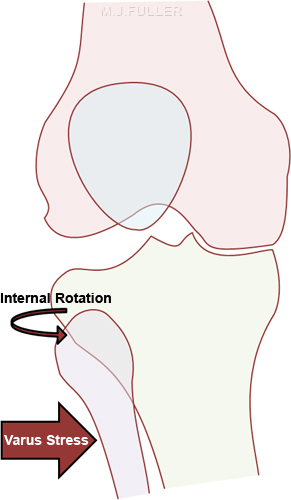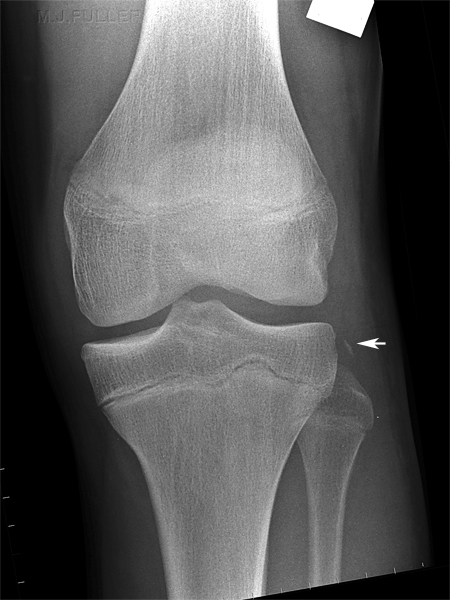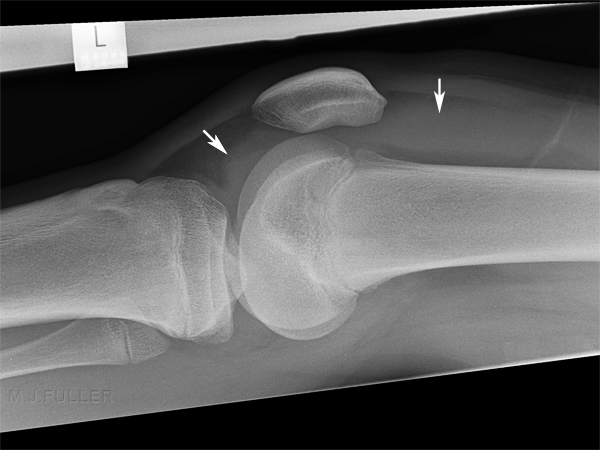Segond Fracture
The Segond fracture is a knee fracture that is sufficiently characteristic in its appearance to make it a relatively easy diagnosis. This page examines the history, mechanism of injury, associated pathology and other considerations relevant to this fracture.
History
The Segond fracture comes under the classification of terms known as eponyms. This refers to the fact that it was named after a person- in this case that person was Dr. Paul Segond who identified a specific type of avulsion fracture of the knee following a number of cadavic experiments.
Mechanism of Injury
Segond fractures are associated with excessive varus force and internal rotation applied to the lower leg. Reverse Segond fracture, as its name suggests, is caused by abnormal valgus stress and external rotation. For more information on the reverse Segond fracture here <a class="external" href="http://www.ajronline.org/cgi/reprint/178/4/979" rel="nofollow" target="_blank">http://www.ajronline.org/cgi/reprint/178/4/979</a>
<a class="external" href="http://courses.rad.washington.edu/mod/resource/view.php?id=400" rel="nofollow" target="_blank">by Brandt Mohr, M.D. http://courses.rad.washington.edu/mod/resource/view.php?id=400</a>
Description of Injury
<a class="external" href="http://courses.rad.washington.edu/mod/resource/view.php?id=400" rel="nofollow" target="_blank">"Originally thought to be a result of avulsion of the medial third of the lateral collateral ligament, more recent research suggests that the insertion of the iliotibial tract (ITT) and the anterior oblique band (AOB), a ligamentous attachment of the fibular collateral ligament to the midportion of the lateral tibia, also play an important role.
A rare, mirror image of the Segond fracture has also been described. The so-called "reverse Segond" fracture is comprised of an avulsion fracture of the tibial component of the medial collateral ligament in association with posterior cruciate ligamentous injury and medial meniscal tears."
</a>
Radiography"Avulsion fractures of the lateral aspect of the proximal tibia below the articular surface are called Segond fractures. The mechanism of injury is internal rotation and varus stress, which causes abnormal tension on the central portion of the lateral capsular ligament. Segond fractures may be accompanied by other injuries:
- Tear of the anterior cruciate ligament (75-100%).
- Injuries of the medial and lateral menisci (66-70%).
- Avulsion fracture of the fibular head.
- Avulsion fracture of the Gerdy tubercle.
The first imaging after injury of the knee is a plain radiograph. When a Segond fracture is identified on the plain film or suspected after clinical examination, MRI is indicated to evaluate the anterior cruciate ligament and possible injuries to menisci and other structures."
<a class="external" href="http://brighamrad.harvard.edu/Cases/bwh/hcache/118/full.html" rel="nofollow" target="_blank">Piran Aliabadi, MD, B Leonard Holman, MD http://brighamrad.harvard.edu/Cases/bwh/hcache/118/full.html</a>
ImagesThe routine views for knee trauma will include an AP and horizontal ray as a minimum. The AP view typically demonstrates the avulsed fragment from the lateral tibia. Importantly, the horizontal ray lateral view will commonly demonstrate a knee effusion (may be important if the avulsed fragment is missed). The Segond fracture is pathognomonic for anterior cruciate ligament tear. An MR of the knee should be performed on all patients who have sustained a Segond fracture.
Comment
The significance of a Segond Fracture is somewhat understated on plain film imaging of the knee. The potential associated soft tissue injuries should be considered and further imaging performed where appropriate.



